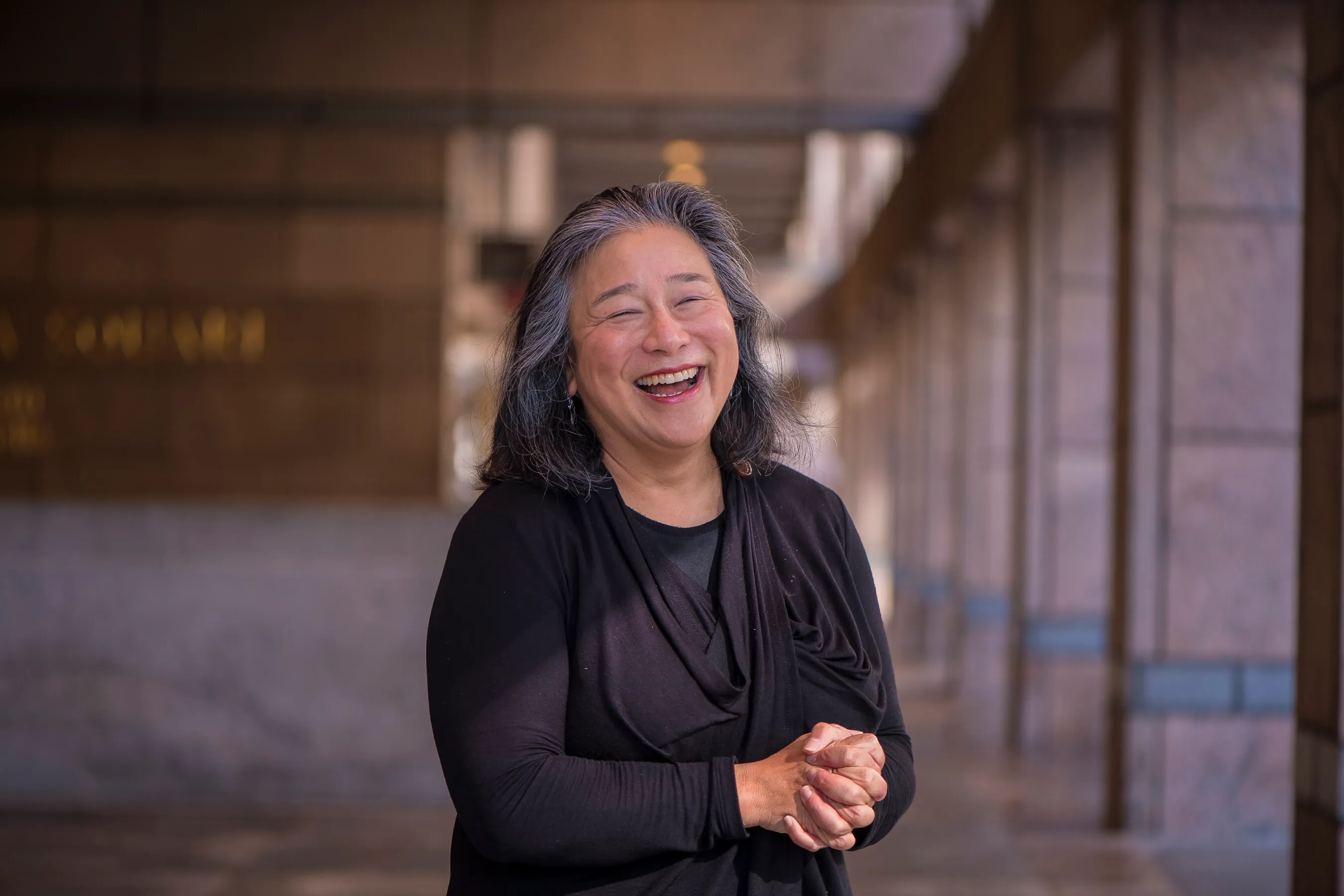
Not Far Enough
This year we celebrate the centennial of the passage of the 19th Amendment, including the addition of the concept of gender into our Constitution explicitly for the first time. It was the culmination of a struggle that dated as far back as our nation’s founding, when Abigail Adams admonished her husband, John, to “remember the ladies” when constructing the “new code of laws” and the vision of America. He, of course, forgot. And so began the long fight for recognition that would not be won until courageous women spoke up, protested, went to jail, and even sacrificed their bodies to lay the groundwork for an inclusive future.
And yet, as hard fought as that victory was, we know it was not sufficient by itself. Constitutional and legislative victories may be the end of one battle, but they do not win the war by themselves. Rather, they mark the start of yet another struggle to achieve the full promise, and the full protections, of the law.
The first step, not the last
The 19th Amendment itself illustrates the issue. Despite the clear wording that the right to vote shall not be denied “on account of sex,” Black, Asian, and Native American women would not get the same voting rights as white women for another half century. And voting rights clearly did not translate into political power—today, women make up only a quarter of the national legislature but over 50% of the population. Black women make up less than 5% of Congress but 7.6% of the population. The 2020 presidential race was met with the promise of six female candidates, but that number slowly reduced to zero. One hundred years after the amendment, we still have never had a woman in the highest office in the land, and a woman has been nominated for vice president by one of the major parties only three times.
Without that political power, the laws prohibiting women from full legal and economic participation continued on the books. Legal change took decades, with major breakthroughs achieved through litigation, led by champions of women’s rights like Justice Ruth Bader Ginsburg, through her work leading the Women’s Rights Project at the American Civil Liberties Union. It was the 14th Amendment, not the 19th, that paved the way in 1971 when the Supreme Court, in Reed v. Reed, held that the Equal Protection Clause applied to gender-based discrimination. It was persistent effort —case by case, law by law, accompanied by the activism of the next wave of the women’s movement —that gradually made progress real, if slow. Indeed, “Head and Master” laws, which gave sole control of marital property to the husband, were not struck down by the Supreme Court until 1981 in Kirchberg v. Feenstra.
This continuous effort also applied to workplace protections for women and people of color. The passage of Title VII of the landmark Civil Rights Act of 1964 created the foundation for basic protections against sex and race discrimination specifically in the workplace. It is well documented that inclusion of “sex” was an addition to the original Title VII. Many have suggested that its addition was a deliberate attempt by conservative opponents to kill the bill, hoping to split coalition votes with obstructive features. Others have credited its addition to women’s rights groups and their lobbying efforts. And it was through litigation again, in Meritor Savings Bank, FSB v. Vinson, that the Supreme Court held in 1986 that the language of Title VII, which up until that point was limited to tangible employment discrimination, also applied to sexual harassment as a form of unlawful discrimination based on sex.
Nevertheless, it persists
During the 34 years since sexual harassment in the workplace was outlawed under federal law, companies across the country promulgated anti-harassment policies, conducted countless hours of sexual harassment legal liability training, and assumed they had human resource mechanisms in place to address complaints. And yet, once again, the enactment of legal change was not enough. Sexism, as ingrained as it is in our social norms, nevertheless persists.
In the case of sexual harassment, it took the courage of survivors to come forward, at great risk to their livelihoods, careers, and personal well-being, to expose the limitations of legal change alone. What we learned, as women found their voices using the #metoo created by Tarana Burke, and leading to the creation of TIME’S UP, was that three decades of anti-sexual harassment law had failed to protect women, and many men, in the workplace, leaving them vulnerable to being preyed upon by those with power and influence. The U.S. Equal Employment Opportunity Commission has estimated that up to 85% of women report having experienced sexual harassment in the workplace during their lifetime. And that number was likely higher due to underreporting accredited to workplace culture and poorly implemented systems of reporting. Even though sexual harassment and other forms of discrimination are illegal, weaknesses in our current laws, policies, and culture still allow many abusers to hold power.
Time’s up, step up
Just as the 19th Amendment was a starting point for women to gain broader legal equity in society, the laws against sexual harassment were only a starting point for the work necessary to extend real workplace protections and achieve workplace equity. We now know, for example, that the ability to bring Title VII lawsuits for redress when sexual harassment occurs is practically meaningless for low-wage women as they cannot find attorneys who can afford to take on a case with such a low prospect of monetary recovery; that was one of the motivations for the founding of the TIME’S UP Legal Defense Fund, to provide a resource of pro bono or low bono attorneys and funding for case costs. Another motivation for the Fund was to provide resources to protect against the tactic in the “predators’ playbook” frequently used to silence victims of sexual harassment: the threat of defamation lawsuits filed against women speaking out publicly about their experiences. These lawsuits were just one tactic in the “playbook” that included retaliation on the job, or labeling survivors as “too much trouble” to hire in their industry, or simply firing or demoting a survivor. These were the tactics that were used to create a culture of fear and silence about sexual harassment on the job and hid the true dimensions of this problem.
The fight for safe, fair, and dignified work for all is not one that will be achieved just from legal change or litigation. It also requires change by our business leaders, managers at every level, and in our culture.
With the growth of a gig economy and the move of more workers from full-time employees to contractual workers, we now know that thousands of workers did not even have protections from sexual harassment under existing laws; we are in an economy where there are more and more employers, and fewer and fewer “employees.” In the last two years, state laws have been changing to recognize this new reality. For example, last year TIME’S UP Now partnered with New York Governor Andrew Cuomo’s office to create and pass the New York Safety Agenda, a package of legislation aimed at ending workplace sexual harassment and empowering workers. It includes changing the sexual harassment standards to make claims more likely to be investigated. The new laws hold companies liable for sexual harassment and are expanded to include domestic workers and independent contractors. But federal law remains unchanged.
And we know that the legal definition of bad behavior under the law is insufficient to combat the harassing and toxic environment that exist in so many workplaces, in every industry. The fight for safe, fair, and dignified work for all is not one that will be achieved just from legal change or litigation. It also requires change by our business leaders, managers at every level, and in our culture.
So, our centennial celebration of the 19th Amendment serves as a memory, a reminder, a clarion call to not just “remember the ladies” and their achievement, but to redouble our efforts to make the kind of systemic, structural change that will fully realize the change in women’s lives that was imagined a hundred years ago. This includes breaking down barriers like unequal pay, the lack of paid leave, and the absence of fair hiring and promotion practices that keep women from succeeding in the workplace. These are also the key building blocks for our economic recovery in order to create a 21st century economy that is resilient, dynamic, and includes all of our workers and talent. The sacrifices of those “iron-jawed angels” are reflected today in the courage of young people on our city streets, of our essential workers who are overwhelmingly women, and those survivors who continue to come forward and speak out. This is our hundred-year challenge, and it is our time to rise to meet it!
I would like to thank Ankita Kanakadandila for providing valuable research assistance.
This piece is part of 19A: The Brookings Gender Equality Series. Learn more about the series and read published work »




